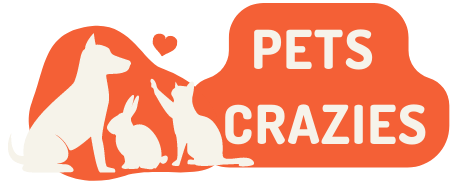We love dogs and when your loyal companion is suddenly in pain, gasping for relief, the fear is overwhelming.
Bloating in dogs isn’t just discomfort; it’s a silent killer that strikes swiftly.
Knowing the symptoms and immediate remedies can be the difference between life and death for your beloved friend.
Symptoms of Bloating in Dogs That are Life Threatening!
If your a dog owner, you need to watch this. My last dog died of this within hours.
When your beloved dog is showing signs of bloating, it’s not just an uncomfortable situation—it can be a life-threatening emergency. Bloat, also known as Gastric Dilatation-Volvulus (GDV), is a condition that requires immediate veterinary attention. Here are the symptoms you should never ignore:
1. Distended Abdomen
A noticeable swelling of the abdomen is often the first sign of bloat. This distension occurs as the stomach fills with gas, fluid, or food, causing it to expand dramatically. This swelling can be visible, but sometimes it’s less obvious, especially in deep-chested dogs where the stomach is tucked up under the ribcage.
2. Retching or Unproductive Vomiting
If your dog is attempting to vomit but nothing is coming up, it’s a significant red flag. Retching without producing vomit or only bringing up a small amount of foam is a classic symptom of GDV. This happens because the stomach is twisted, blocking both the entrance and exit, preventing any material from passing through.
3. Excessive Drooling
Dogs suffering from bloat may drool excessively. This is often accompanied by signs of nausea and discomfort. The drooling occurs due to the pain and distress caused by the bloating and the body’s attempts to deal with the trapped gas.
4. Restlessness and Pacing
A dog experiencing bloat will often be unable to get comfortable. They may pace, stand, and lie down repeatedly, or appear generally restless. This behavior is a result of the severe pain and discomfort they are feeling as their stomach expands and twists.
5. Difficulty Breathing
As the stomach swells, it can press against the diaphragm, making it difficult for the dog to breathe. This labored breathing is a critical sign that the condition is progressing and that immediate medical intervention is needed.
6. Pale Gums
Checking your dog’s gums can provide a quick indicator of their condition. Pale or white gums suggest poor circulation, a result of shock setting in as blood flow is compromised due to the twisted stomach. This is a dire sign that your dog’s condition is critical.
7. Collapse or Weakness
If your dog suddenly collapses, is extremely weak, or appears unable to stand, it could be due to the shock and internal damage caused by bloat. At this stage, time is of the essence, and emergency care is crucial to survival.
8. Rapid Heart Rate
A quickened heartbeat is another sign that your dog’s body is under severe stress. The combination of pain, pressure on the heart, and reduced blood flow can cause this symptom, indicating that the situation is becoming increasingly dire.
9. Sudden Death
In the most severe cases, bloat can cause sudden death due to cardiac arrhythmias or ruptures in the stomach lining. This heartbreaking outcome can occur if the condition isn’t treated swiftly.
Managing a Bloated Dog Stomach at Home
When your dog’s stomach appears bloated, it can be alarming, and knowing what to do at home can make a big difference. While it’s crucial to recognize that severe bloating, such as Gastric Dilatation-Volvulus (GDV), requires immediate veterinary care, there are some steps you can take at home if your dog is dealing with mild food bloat.
1. Probiotics and Prebiotics: Supporting Gut Health
A balanced gut is essential for your dog’s overall well-being. Probiotics introduce beneficial bacteria to your dog’s digestive system, while prebiotics serve as food for these bacteria, helping them thrive. Regularly including these in your dog’s diet can promote a healthier gut, reduce the chances of gas buildup, and prevent bloating. Consider adding a probiotic supplement to their meals or choosing dog foods that are rich in these beneficial components.
2. Slow Eating: Preventing Air Swallowing
Dogs that gulp down their food are more likely to swallow air, leading to gas and bloating. If your dog eats too quickly, try using a slow feeder bowl. These bowls are designed to slow down your dog’s eating speed by adding obstacles that make it harder to scarf down food too quickly. Feeding smaller, more frequent meals throughout the day instead of one large meal can also help reduce the risk of bloating.
3. Gentle Abdominal Massage: Easing Discomfort
If your dog is experiencing mild bloating, a gentle massage can help relieve gas. By carefully massaging your dog’s belly in a circular motion, you can help move the gas through the digestive system. Ensure that your dog is calm and relaxed before starting. If you notice areas that are particularly hard, focus on them gently to relieve the pressure.
4. Light Exercise: Promoting Digestive Movement
Sometimes, a short walk can help ease your dog’s bloating by promoting digestive activity. Exercise helps stimulate the digestive system and can encourage your dog to pass gas or even stool, relieving some of the discomfort. However, be cautious not to engage in vigorous activities as they could worsen the situation.
5. Monitor Closely and Contact Your Vet if Necessary
While these home remedies can be effective for mild cases of bloating, it’s essential to keep a close eye on your dog. If the bloating doesn’t subside or if you observe more severe symptoms—like repeated retching, labored breathing, or pale gums—contact your vet immediately. These could be signs of a serious condition like GDV, which requires urgent medical intervention(





